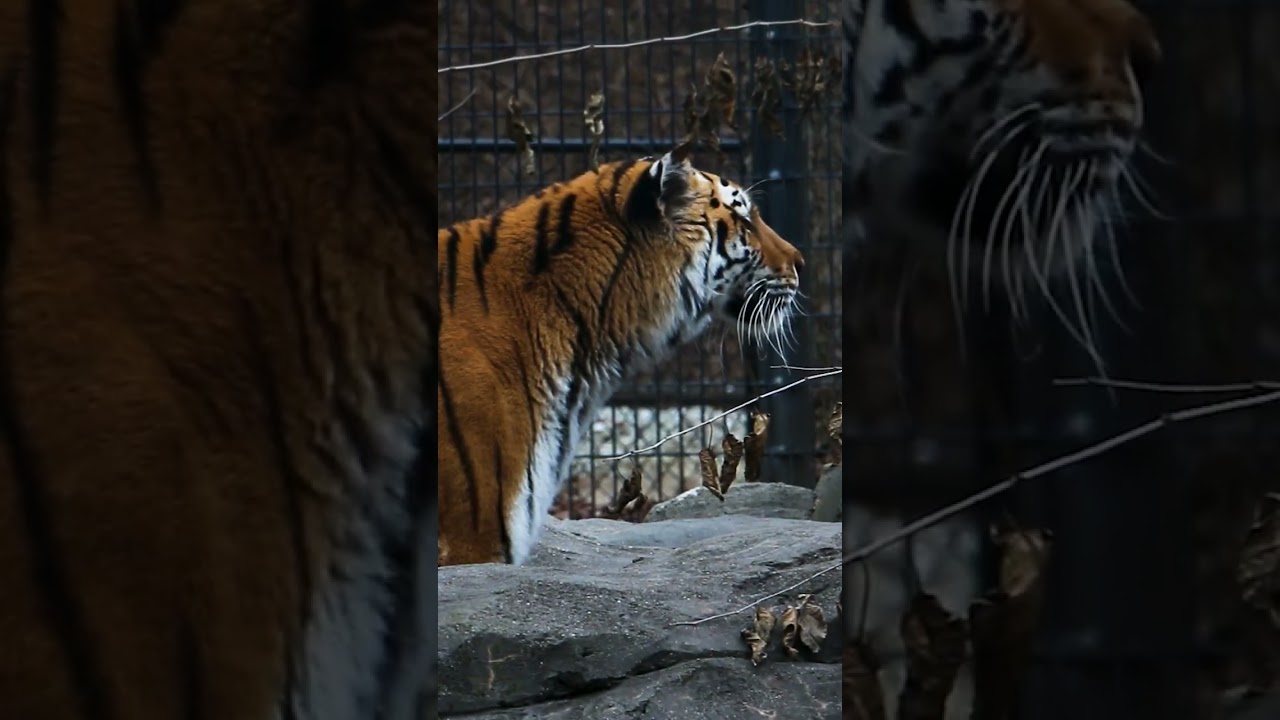– The intriguing behavior and inquisitive nature of Amur tigers like Misha at the Blank Park Zoo.
– The solitary but complex lifestyle of one of the world’s largest big cats.
– Conservation efforts are needed to protect Amur tigers, a species currently listed as Endangered.
Have you ever observed a cat, large or small, in a moment of pure curiosity? They move with fluid grace, ears perked and eyes wide as they cautiously investigate their surroundings. Now imagine that scene, but on a grander scale, with one of nature’s most majestic creatures – the Amur tiger. At the Blank Park Zoo, there’s a particular individual who embodies this spirit of curiosity – a female named Misha.
Misha, like all Amur tigers, is a solitary creature by nature. Endemic to the Siberian region, they are suited to quiet solitude in the vast wilderness. However, in the comforts of a well-designed zoo habitat, their behavior presents a window into their wild counterparts’ lives. And it’s an inspiring sight to behold when something captures Misha’s attention; she becomes the epitome of an investigatory predator, a characteristic vital for survival in the harsh climates of Eastern Russia.
Amur tigers, formerly known as Siberian, are amongst the biggest of the big cat family. Each stripe pattern on their thick fur is as unique as a fingerprint, and it helps them blend seamlessly into their surroundings. Despite their size, they are adept at moving silently, embodying a kind of stealth that seems at odds with their impressive presence. But their strength and stealth are not exaggerations; they need both to hunt and thrive in their native habitat.
The Russian Far East, where these tigers roam, conjures images of snow-laden forests and frigid temperatures. Here, the rule is simple: adapt or perish. Amur tigers have done more than adapt. They have thrived, historically, growing thick fur and layering fat to insulate themselves against the biting cold. However, the game’s rules have changed in today’s age of human expansion and climate change.
Conservationists have been sounding the alarm for these tigers for decades now. Classified as Endangered, Amur tigers face threats such as poaching and habitat loss. However, it’s not just about preserving a species; it’s about maintaining the balance of an entire ecosystem. Amur tigers are apex predators, and their presence or absence has a cascading effect on the environment.
Zoos across the globe, including the Blank Park Zoo, play a critical role in conservation efforts. They provide a haven for endangered species and an educational platform to raise awareness. Here, the spirit of wild creatures like Misha becomes an ambassador for her species, offering visitors a glimpse of a world that desperately needs our help.
One might think that the removal from the wild would dampen the spirit of these independent, big cats, but watch Misha as she paces, plays, and peruses her habitat. These activities aren’t just for fun; they’re instinctual exercises, a way for her to stay mentally and physically sharp. The zoo’s enrichment programs are designed to simulate challenges they might encounter in the wild, from puzzle feeders to scent trails. These initiatives keep the tiger’s body strong and its mind keen—both essentials for this species’ ongoing survival, whether in captivity or the wild.
What’s more, Misha’s presence offers invaluable educational opportunities. By observing her behaviors, researchers can learn more about the nuances of Amur tiger communication, social structure, and health. These insights are essential for developing better conservation strategies in the wild.
Witnessing’s curiosity of Misha, it’s clear that each moment she investigates her surroundings, each paw step, each flick of the tail speaks volumes about the natural wonders of her kind. Her daily adventures might not cover the expanse of Siberia’s wilderness, but they capture the essence of the wild—something that often feels distant in our modern lives.
The experience of watching Misha explore also inspires a sense of stewardship toward the natural world. Amur tigers are not just fascinating animals; they are barometers for the health of our planet. As one of the top predators in their ecosystem, their well-being indicates the state of the wilderness in which they live.
In the hustle and bustle of our daily lives, it’s easy to forget that these magnificent creatures share our world. It can take a moment of connection, a glance into Misha’s eyes, to remind us of the grand tapestry of life and our responsibility to protect it. Supporting zoos like Blank Park, which are dedicated to caring for and conserving wildlife, is one way to honor that connection.
Misha’s story is one of resilience and beauty, a narrative woven into the larger fabric of Amur tiger conservation. As solitary as she may be, her impact reaches far beyond the bounds of her enclosure. She represents hope—a beacon for what can be achieved when we commit to preserving the treasures of our natural world.
In conclusion, the majesty of Amur tigers, embodied by individuals like Misha, touches something primal within us. It is a reminder of a world bustling with life, much of which remains hidden from our everyday sights and sounds. Whether it’s the silent padding of a large cat’s paws, the ghostly pattern of stripes disappearing into the foliage, or the hypnotic gaze that holds years of evolutionary mystique, the story of Misha and her kin is one worth observing and, more importantly, one worth telling.
By sharing glimpses of these extraordinary creatures with the world, zoos do not just entertain; they educate and inspire action. They remind us that despite our differences, all living beings share common threads in the tapestry of life. And it is up to us, it seems, to ensure that the weave does not unravel for the Amur tiger and the countless other species whose existence hangs in a delicate balance.
*****
Source Description
Amur tigers, like Misha, are solitary creatures. So when something catches her eye, you better believe she’s investigating!


